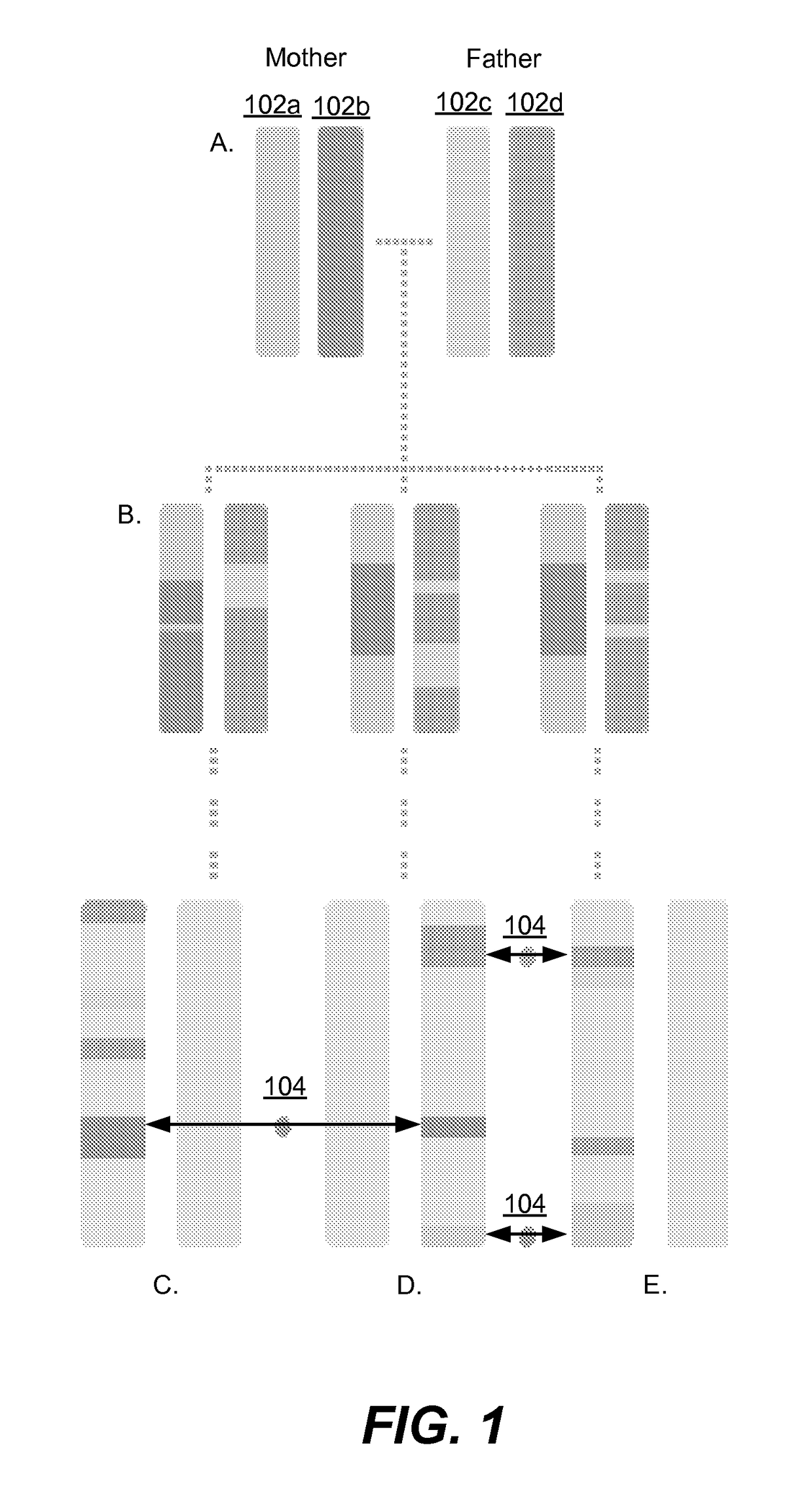Predicting health outcomes
a health outcome and prediction technology, applied in the field of prediction of health outcomes, can solve the problems of inability to extract relevant and valuable medical information, lack of scalability, and increasing volume of genomic information
- Summary
- Abstract
- Description
- Claims
- Application Information
AI Technical Summary
Benefits of technology
Problems solved by technology
Method used
Image
Examples
example 1
Predicting Carrier Status for a Rare Disease and Tested Using a Test Dataset
[0084]In this example, methods are described for using DNA shared identical-by-descent (IBD) to identify individuals likely to be carrying genetic variants, which are likely to cause disease, as the health outcome. First, a database of individuals is provided for whom genetic information was collected at a large number of locations across the genome (e.g. data generated using genotyping array or next-generation sequencing technologies). It is assumed that the location (on the genome) of most of the disease variants is mostly known but additional information about the disease variants is either absent in the collected data or simply unknown. Such an information level is a common outcome of many genomic analyses for disease variation.
[0085]If two people, one of whom has a disease, share genetic information identical in state (IBS) at a location known for harbouring disease variants, the other person is likely ...
example 2
UnderDog Implements Usage of Population-Level IBD for the Imputation of the Unknown Variant Status (Both with and without Seeding)
[0108]In this example, population-level IBD was used for the imputation of the unknown variant status as the health outcome.
Methods
[0109]The methods used to impute variants that are not observed in the test individual included UnderDog. To impute is to make an educated guess about an individual's genotype at a particular position or set of positions. UnderDog uses an algorithm that is based on the algorithm described in Browning and Browning 2009, the contents of which are incorporated by reference herein in its entirety for all purposes.
[0110]The first step for UnderDog is to build a statistical model of non-pairwise population-level genetic variation from a set of individuals who are mostly distantly related to the test individual. The resultant model of genetic variation can then be used to impute variants that are not observed in the test individual (...
PUM
 Login to View More
Login to View More Abstract
Description
Claims
Application Information
 Login to View More
Login to View More - R&D
- Intellectual Property
- Life Sciences
- Materials
- Tech Scout
- Unparalleled Data Quality
- Higher Quality Content
- 60% Fewer Hallucinations
Browse by: Latest US Patents, China's latest patents, Technical Efficacy Thesaurus, Application Domain, Technology Topic, Popular Technical Reports.
© 2025 PatSnap. All rights reserved.Legal|Privacy policy|Modern Slavery Act Transparency Statement|Sitemap|About US| Contact US: help@patsnap.com



